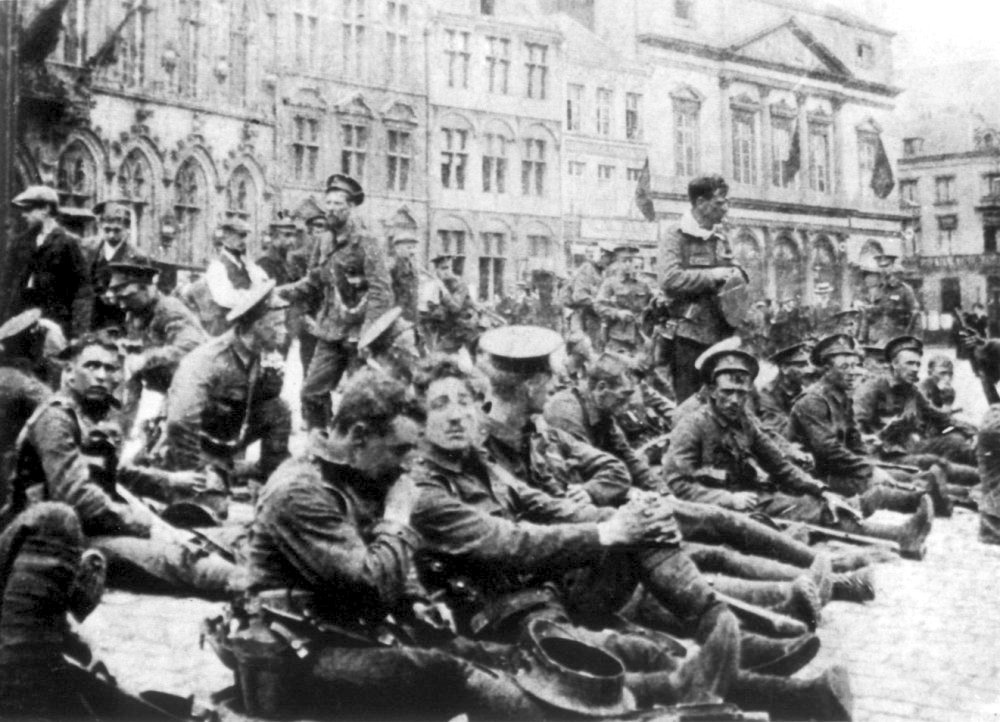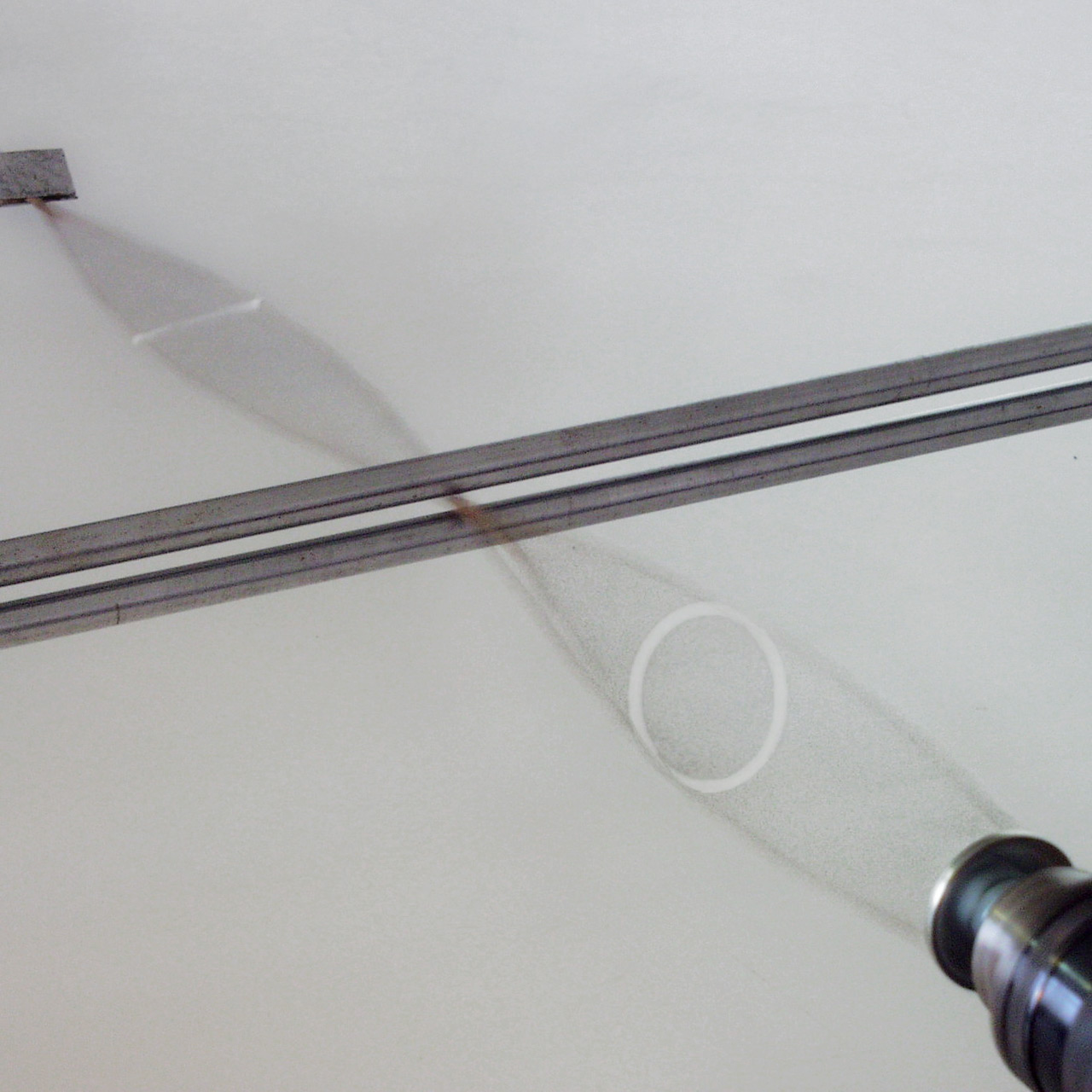|
Adcock Antenna
The Adcock antenna is an antenna array consisting of four equidistant vertical elements which can be used to transmit or receive directional radio waves. The Adcock array was invented and patented by British engineer Frank Adcock and since his August 1919 British Patent No. 130,490, the 'Adcock Aerial' has been used for a variety of applications, both civilian and military. (Note: The patent lawyer's name appears as inventor, with "F. Adcock" in parentheses, since Lt. Adcock, Royal Engineers(RE) Service Number 33962 was serving in wartime France at the time.) Although originally conceived for receiving low frequency (LF) waves, it has also been used for transmitting, and has since been adapted for use at much higher frequencies, up to ultra high frequency (UHF). In the early 1930s, the Adcock antenna (transmitting in the LF/MF bands) became a key feature of the newly created radio navigation system for aviation. The low frequency radio range (LFR) network, w ... [...More Info...] [...Related Items...] OR: [Wikipedia] [Google] [Baidu] |
Azimuth
An azimuth (; from ) is the horizontal angle from a cardinal direction, most commonly north, in a local or observer-centric spherical coordinate system. Mathematically, the relative position vector from an observer ( origin) to a point of interest is projected perpendicularly onto a reference plane (the horizontal plane); the angle between the projected vector and a reference vector on the reference plane is called the azimuth. When used as a celestial coordinate, the azimuth is the horizontal direction of a star or other astronomical object in the sky. The star is the point of interest, the reference plane is the local area (e.g. a circular area with a 5 km radius at sea level) around an observer on Earth's surface, and the reference vector points to true north. The azimuth is the angle between the north vector and the star's vector on the horizontal plane. Azimuth is usually measured in degrees (°), in the positive range 0° to 360° or in the signed ... [...More Info...] [...Related Items...] OR: [Wikipedia] [Google] [Baidu] |
Radio Frequency Antenna Types
Radio is the technology of telecommunication, communicating using radio waves. Radio waves are electromagnetic waves of frequency between 3 hertz (Hz) and 300 gigahertz (GHz). They are generated by an electronic device called a transmitter connected to an antenna (radio), antenna which radiates the waves. They can be received by other antennas connected to a radio receiver; this is the fundamental principle of radio communication. In addition to communication, radio is used for radar, radio navigation, radio control, remote control, remote sensing, and other applications. In radio communication, used in radio and television broadcasting, cell phones, two-way radios, wireless networking, and satellite communication, among numerous other uses, radio waves are used to carry information across space from a transmitter to a receiver, by Modulation, modulating the radio signal (impressing an information signal on the radio wave by varying some aspect of the wave) in the tran ... [...More Info...] [...Related Items...] OR: [Wikipedia] [Google] [Baidu] |
History Of Air Traffic Control
History is the systematic study of the past, focusing primarily on the human past. As an academic discipline, it analyses and interprets evidence to construct narratives about what happened and explain why it happened. Some theorists categorize history as a social science, while others see it as part of the humanities or consider it a hybrid discipline. Similar debates surround the purpose of history—for example, whether its main aim is theoretical, to uncover the truth, or practical, to learn lessons from the past. In a more general sense, the term ''history'' refers not to an academic field but to the past itself, times in the past, or to individual texts about the past. Historical research relies on primary and secondary sources to reconstruct past events and validate interpretations. Source criticism is used to evaluate these sources, assessing their authenticity, content, and reliability. Historians strive to integrate the perspectives of several sources to develop ... [...More Info...] [...Related Items...] OR: [Wikipedia] [Google] [Baidu] |
High-frequency Direction Finding
High-frequency direction finding, usually known by its abbreviation HF/DF or nickname huff-duff, is a type of radio direction finder (RDF) introduced in World War II. High frequency (HF) refers to a radio band that can effectively communicate over long distances; for example, between U-boats and their land-based headquarters. HF/DF was primarily used to catch enemy radios while they transmitted, although it was also used to locate friendly aircraft as a navigation aid. The basic technique remains in use as one of the fundamental disciplines of signals intelligence, although typically incorporated into a larger suite of radio systems and radars instead of being a stand-alone system. In earlier RDF systems, the operator mechanically rotated a loop antenna or solenoid and listened for peaks or nulls in the signal to determine the bearing to the transmitter. This took considerable time, on the order of a minute or more. Radio operators could avoid being located by keeping their messag ... [...More Info...] [...Related Items...] OR: [Wikipedia] [Google] [Baidu] |
Radio Direction Finder
Direction finding (DF), radio direction finding (RDF), or radiogoniometry is the use of radio waves to determine the direction to a radio source. The source may be a cooperating radio transmitter or may be an inadvertent source, a naturally-occurring radio source, or an illicit or enemy system. Radio direction finding differs from radar in that only the direction is determined by any one receiver; a radar system usually also gives a distance to the object of interest, as well as direction. By triangulation, the location of a radio source can be determined by measuring its direction from two or more locations. Radio direction finding is used in radio navigation for ships and aircraft, to locate emergency transmitters for search and rescue, for tracking wildlife, and to locate illegal or interfering transmitters. During the Second World War, radio direction finding was used by both sides to locate and direct aircraft, surface ships, and submarines. RDF systems can be used ... [...More Info...] [...Related Items...] OR: [Wikipedia] [Google] [Baidu] |
Direction Finding
Direction finding (DF), radio direction finding (RDF), or radiogoniometry is the use of radio waves to determine the direction to a radio source. The source may be a cooperating radio transmitter or may be an inadvertent source, a naturally-occurring radio source, or an illicit or enemy system. Radio direction finding differs from radar in that only the direction is determined by any one receiver; a radar system usually also gives a distance to the object of interest, as well as direction. By triangulation, the location of a radio source can be determined by measuring its direction from two or more locations. Radio direction finding is used in radio navigation for ships and aircraft, to locate emergency transmitters for search and rescue, for tracking wildlife, and to locate illegal or interfering transmitters. During the Second World War, radio direction finding was used by both sides to locate and direct aircraft, surface ships, and submarines. RDF systems can be used w ... [...More Info...] [...Related Items...] OR: [Wikipedia] [Google] [Baidu] |
Dipole Antenna
In radio and telecommunications a dipole antenna or doublet is one of the two simplest and most widely used antenna types, types of antenna; the other is the monopole antenna, monopole. The dipole is any one of a class of antennas producing a radiation pattern approximating that of an elementary electric dipole with a radiating structure supporting a line current so energized that the current has only one node at each far end. A dipole antenna commonly consists of two identical conductive elements such as metal wires or rods. The driving current from the transmitter is applied, or for receiving antennas the output signal to the radio receiver, receiver is taken, between the two halves of the antenna. Each side of the feedline to the transmitter or receiver is connected to one of the conductors. This contrasts with a monopole antenna, which consists of a single rod or conductor with one side of the feedline connected to it, and the other side connected to some type of g ... [...More Info...] [...Related Items...] OR: [Wikipedia] [Google] [Baidu] |
Monopole Antenna
A monopole antenna is a class of radio antenna consisting of a straight rod-shaped conductor, often mounted perpendicularly over some type of conductive surface, called a ground plane. The current from the transmitter is applied, or for receiving antennas the output signal voltage to the receiver is taken, between the monopole and the ground plane. One side of the feedline to the transmitter or receiver is connected to the lower end of the monopole element, and the other side is connected to the ground plane, which may be the Earth. This contrasts with a dipole antenna which consists of two identical rod conductors, with the current from the transmitter applied between the two halves of the antenna. The monopole antenna is related mathematically to the dipole. The vertical monopole is an omnidirectional antenna with a low gain of 2 - 5 dBi, and radiates most of its power in horizontal directions or low elevation angles. Common types of monopole antenna are the w ... [...More Info...] [...Related Items...] OR: [Wikipedia] [Google] [Baidu] |
British Expeditionary Force (World War I)
The British Expeditionary Force (BEF) was the formation of British army on the Western Front during World War I. They were sent by Britain to France in 1914 to aid in resisting the German invasion. Originally sent as six divisions the British Army to the Western Front during the First World War. Planning for a British Expeditionary Force began with the 1906–1912 Haldane Reforms of the British Army carried out by the Secretary of State for War Richard Haldane following the Second Boer War (1899–1902). The term ''British Expeditionary Force'' is often used to refer only to the forces present in France prior to the end of the First Battle of Ypres on 22 November 1914. By the end of 1914—after the battles of Mons, Le Cateau, the Aisne and Ypres—the existent BEF had been almost exhausted, although it helped stop the German advance.An alternative endpoint of the BEF was 26 December 1914, when it was divided into the First and Second Armies (a Third, Fourth and ... [...More Info...] [...Related Items...] OR: [Wikipedia] [Google] [Baidu] |
Polarization (waves)
, or , is a property of transverse waves which specifies the geometrical orientation of the oscillations. In a transverse wave, the direction of the oscillation is perpendicular to the direction of motion of the wave. One example of a polarized transverse wave is vibrations traveling along a taut string, for example, in a musical instrument like a guitar string. Depending on how the string is plucked, the vibrations can be in a vertical direction, horizontal direction, or at any angle perpendicular to the string. In contrast, in longitudinal waves, such as sound waves in a liquid or gas, the displacement of the particles in the oscillation is always in the direction of propagation, so these waves do not exhibit polarization. Transverse waves that exhibit polarization include electromagnetic waves such as light and radio waves, gravitational waves, and transverse sound waves ( shear waves) in solids. An electromagnetic wave such as light consists of a coupled oscillating el ... [...More Info...] [...Related Items...] OR: [Wikipedia] [Google] [Baidu] |









